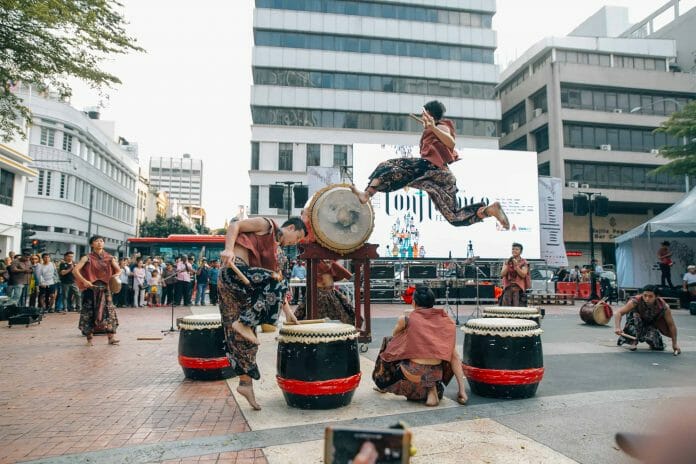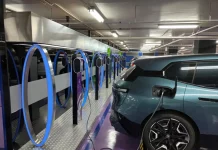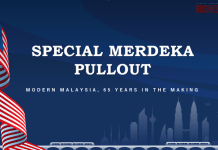
From Singapore to Montreal, Kowloon to Abu Dhabi, and other cities around the world, creative and cultural districts have emerged as a mean to re-energise ‘hollowed out’ city centres, delivering social dividends and generating knowledge-based economic activities.
Following in the footsteps of innovative and cultural trend-setting hubs such as Portland, Oregon and other inspirational districts in well-loved cities such as Paris and New York, governments have been investing heavily in ‘Portlands’ of their own. Singapore has reportedly invested USD740 million, Hong Kong has invested USD2.76 billion in their West Kowloon district and Abu Dhabi, a portion of an estimated USD27.7 billion.
In some instances, districts have been borne from organic community-based efforts and in others, they have emerged in response to top-down government-led initiatives. While the success of these initiatives are varied, the experience of successful creative and cultural districts tells us that there must be authenticity, that the district must be owned by the city’s citizens and built on local values and identity.
Downtown Kuala Lumpur is primed to become Asia’s premier creative and cultural district. However, with the administrative, commercial and residential centres moving out of the historic core of Kuala Lumpur to areas such as Putrajaya and other parts of Greater Kuala Lumpur – Downtown Kuala Lumpur has hollowed out, leaving it deserted after business hours. While the heritage centre of Kuala Lumpur suffers from a loss of traditional economic functions, a poor state of conservation, negative perceptions of safety and low patronage from locals, it has enormous potential.
The historic core (beginning with the 110-year old Masjid Jamek as its central point at the confluence of the Klang and Gombak rivers) is largely intact, with nearly 500 traditional shophouses and a variety of government-owned colonial and Merdeka-era heritage assets. It is buffered by significant green areas such as the Bukit Nanas forest reserve, has a world-class public transport system and has benefitted from a government-led urban regeneration programme by Think City, a social purpose organisation focused on urban rejuvenation.
With these opportunities for transforming the heritage centre in mind, Think City has conducted in-depth studies in envisioning a revival for Downtown Kuala Lumpur, producing a strategic master plan for the area.
Think City Managing Director, Hamdan Abdul Majeed, said, “The vision for a creative and cultural district within Downtown KL is that of an inclusive, authentic and viable creative and cultural centre that knits together heritage, culture and innovation, enhancing visitor appeal and liveability.”
He added that, achieving this would require a step change in conservation standards, amenity improvements, and new creative content efforts.
“To make the changes required, we need significant investment and commitment from the public and private sectors, and strong working relationships with key community groups, including support in the form of an overarching governance framework,” he said.
The strategic master plan identifies six key strategies:
- Enhancing the creative and cultural ecosystem through a precinct-wide museological programme, branding and marketing, capacity building, content creation, space activation, safer city initiatives, collaborations and networks;
- Improving the state of conservation of traditional shophouses and iconic civic heritage buildings;
- Enhancing public spaces, with focus on streetscapes, communal spaces, greening and cooling initiatives;
- Maximising accessibility and connectivity, in particular pedestrian amenities, linkages between streets and spaces, with reduced reliance on private vehicles;
- Repopulating the city centre through investments in liveability, repurposing unused office spaces, promoting shophouse living, targeting new residents (of all nationalities) and retaining traditional communities; and
- Developing a framework for governance and regulatory mechanisms to improve coordination and curation of cultural content, physical works, branding and marketing.
“A compelling and effective implementation plan is crucial to prioritise initiatives and show what is possible. Our approach has always included a process that involves discovery through research and community engagement, ideation and the piloting of quality demonstration projects that may spur other projects, and serve to attract further investment and interest,” Hamdan emphasised.
He said that support from all stakeholders was essential to create regulation, allocate dedicated funding, and assign responsibilities.
“Of course, there is the element of uncertainty and a plan gives us the flexibility to manage that,” he said.
“Overall, there are numerous social and economic benefits associated with a creative and cultural district, tying together heritage assets, cultural attractions and creative enterprises. These include stronger community bonds, improved physical and mental health, greater equity of space, reduced inequalities, opportunities for learning, innovation, improved productivity and employment.”
To find out more about the Kuala Lumpur Creative and Cultural District Strategic Master Plan, head to www.thinkcity.com.my.








